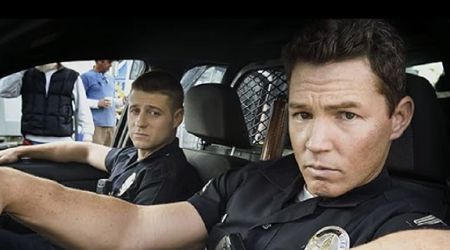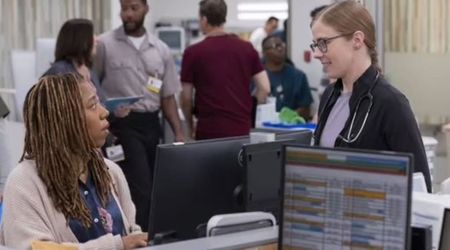'Fear City: New York vs the Mafia': Rise of NYC's 'Five Families' and eventual fall of Italian-American mafia

New York City is blemished by a dark past, riddled with mystery and crime. In the 1970s, the Big Apple was predominantly the center of operation for the Italian-American organized-crime network. The American mafia was a system of crime families that had emerged at the turn of the century and gained control over the city mostly through the success of the illegal liquor trade during the 1920s Prohibition era. They owned the majority of the clubs in the district serving bootlegged alcohol, engaged in clan wars and heists, indulged in drug trafficking and illicit gambling and also maintained control over the construction industry, the longshoremen and the fish market. The vertically organized business originally began in the Italian island of Sicily and gradually moved to the west, establishing a strong network in the US in the late 1800s. It came to be known as the 'La Cosa Nostra', which in Italian stood for 'this thing of ours'. In a new true-crime docuseries 'Fear City: New York vs The Mafia', Netflix is delving into the 'Five Families' of the New York mafia that ruled the city with a bloody fist and traces how the law enforcement took them down in the late 20th century.
Prohibition era
The US saw a surge in its population in the late 19th century and early 20th century, as hordes of Italians comprising unskilled laborers, farmers and craftsmen flocked to the country yearning for better economic opportunities. According to Thomas Repetto, a historian, the number of Italians residing in New York City increased from 20,000 to 250,000 between 1880 and 1890. By 1919, the number had doubled to 500,000 Italians and first-generation Italian-Americans, forming one-tenth of the city's total population. While a majority of these immigrants were law-abiding citizens, there were the occasional few who had criminal backgrounds and formed neighborhood gangs, preying on their own communities.

The 18th Amendment to the US Constitution passed the Prohibition Act in the 1920s, which effectively banned the sale, manufacture and transportation of alcohol. This gave many Italian-American gangs, as well as gangs of other ethnicities, a business incentive. They started bootlegging alcohol and transformed themselves into sophisticated criminal establishments. They were skilled smugglers, money launderers and effective in bribing the police as well as public officials to turn a blind eye to their illicit operations. During this time, across the pond in Sicily, Italy, the Mafia had flourished since the mid-1800s. However, some of the Mafioso fled the country and escaped to the US, when they came under attack from the Fascist regime of Benito Mussolini.
Eventually, they too admitted themselves in the bootlegging business and became members of the growing American mafia. Although the Sicilian and the US mafia were two separate entities, they adopted the Italian methods of operations, including the Omerta, the code of conduct and secrecy that forbade them from cooperating with government authorities.
American Organized Crime

A bloody power struggle known as the 'Castellammarese War' broke out between two of NYC's biggest Italian-American criminal gangs in the late 1920s. In 1931, Sicilian-born Mafia don, Salvatore Maranzano's faction of the organized-crime network rose to the top and he became New York's self-proclaimed 'capo di Tutto capi' or the boss of all bosses. However, his power came to an end that same year, when a rising mobster Lucky Luciano, disgruntled with Maranzano, had him murdered. Luciano then created a central organization, the 'Commission', that served as a sort of national board of directors for the American mafia, which by then had grown to comprise at least 20 crime families across the US.
New York emerged as America's mafia capital, the control of which had been divided among five main organized-crime families. Every other location of mafia operation had just one crime family per city. The Commission's main role was to set police and intervene in disagreements that may arise amongst the families. Currently, the Federal Bureau of Investigation estimates that there about 3,000 members and affiliates of the Italian-American mafia spread throughout the US.
La Cosa Nostra
The Five Families of New York have run the Italian-American Mafia since 1931. They were formed by Maranzano after he recognized Italian-American gangs in the NYC neighborhood. They were initially inducted into the Maranzano, Profaci, Mangano, Lucia, and Gagliano families at the time, but at present, the families go by the Bonanno, Colombo, Gambino, Genovese and Lucchese families.

The Genovese family was established by Luciano, the godfather of the American mob, in the 1930s, and it eventually dominated the criminal activities in New York and New Jersey as part of the Italian-American organized-crime networks or the 'La Cosa Nostra'. Luciano also created the current hierarchy in the Italian-American Mafia. The Genovese family first went by the name Luciano but was renamed as such after Vito Genovese took control of the family, following Luciano's deportation to Italy post World War II. Since then, the family has been implicated in various criminal activities ranging from drug trafficking to mortgage fraud. In 1963, Joseph Valachi, a member of the Genovese crime family, publicly disclosed the existence of NYC's Five Families at the Valachi hearings.
Fall of the mafia
The Racketeer Influenced and Corrupt Organizations (RICO) Act of 1970, passed by Congress became a powerful tool for law enforcement to take down the mafia. It enabled prosecutors to investigate crime families, their source of revenue (both legal and illegal). The RICO laws proved beneficial in convicting numerous high-ranked mobsters in the 1980s and 1990s. Some Mafia members who were set to serve long prison sentences also broke Omerta and snitched on their fellow mobsters in exchange for a place in the federal witness-protection program. Meanwhile, mafia membership numbers declined as the once traditional recruiting locations for Italian -American neighbors, underwent drastic changes in the demography and rejoined society.

By the early 2000s, the American Mafia was only a shell of its former self, yet it remained active in carrying out some of its traditional entries. Illegal gambling, loan-sharking, and involvement in labor unions and the legitimate industries like construction still persisted and became their primary source of income. Perhaps one of the reasons for the mafia's existence is the fact that after the 9/11 terror attack, federal resources that had been dedicated to investigating organized crime were shifted to counterterrorism work. According to a BBC report, the FBI arrested more than 100 mob members in 2011, including the alleged capo of the Colombo crime family. It was dubbed as one of the largest round-ups in the history of the FBI, but the head of the bureau's New York office said that "convicting the hierarchies of the five families several times over has not eradicated the problem". He also went on to add the belief that organized crime had been defeated was just a "myth."
'Fear City: New York vs The Mafia' is set to release on Netflix on July 22.










